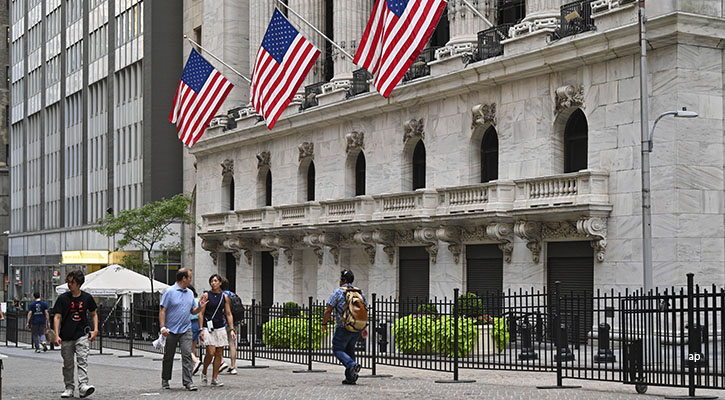
Best MPF Scheme finalist -- HSBC Mandatory Provident Fund – ValueChoice
M: Morningstar A:Alfred Yip, Head of Pensions, The Hongkong and Shanghai Banking Corporation Limited
M: Could you highlight any major changes made to the scheme over the course of 2016? In particular, please outline the investment options that were added to the scheme and/or any changes that helped facilitate a better client experience for scheme members.
A: HSBC MPF has restructured HSBC MPF schemes in 2016 by merging its 4 MPF schemes into 2 schemes. As a result of the merger, we have expanded the fund choice of the HSBC MPF – ValueChoice by adding the Global Equity Fund, bringing the number of funds from 9 to 10 and all the annual management fees of the ValueChoice scheme remains at 0.79% of the Net Asset Value. The fund choice under HSBC MPF – SuperTrust Plus remains at 14, covering a wide and comprehensive range of funds for our members to choose from.
Apart from a wider variety of choice of constituent funds offered to HSBC MPF clients, the consolidation helps facilitate a better client experience by simplifying the scheme choices of HSBC MPF from four to two, and enabling the economies of scale as the overheads of the schemes are now spread over a larger asset base. This will help to lower the fund expense ratio in the long run.
On the other hand, we have been busy preparing for the launch of DIS. Instead of launching new DIS funds, we are converting 3 of our constituent funds in the two schemes into DIS funds. This will help to provide a larger asset base at the launch of DIS, and to lower the Fund Expenses Ratio of our DIS funds following the launch on 1 April 2017, such that the members can enjoy the benefit of DIS earlier. In fact, we have even lower our management fees of these 3 funds on 1 October 2016 to 0.75% p.a. of Net Asset Value, in advance of DIS, so that members can benefit from it even earlier.
M: What are some of your more popular MPFs? Why do you think that is?
A: Constituent funds under Hong Kong Equity sector, including Hang Seng Index Tracking Fund and Hong Kong and Chinese Equity Fund, and mixed asset funds, including Balance Fund and Growth Fund are the more popular MPF funds of HSBC, they have the highest portions in our MPF portfolio in terms of fund size under management. (Source: HSBC MPF Fund Fact Sheet as at 4th Quarter 2016). For HK equities, this may reflect a home-bias preference of MPF investors whilst for mixed asset funds, they are also popular choices as these funds provide diversification benefits for the end investors.
These funds have consistently been performing very well and that contributes to the success of these funds.
M: Can you comment on how the scheme’s underlying investment options are put together? How do you determine the appropriate product types (e.g. equities, fixed income, target-date) for the scheme and subsequently, the most suitable investment strategy/mandate for each type of product(s)?
A: HSBC MPF provides different MPF schemes with a range of diversified and comprehensive constituent funds to meet clients’ unique retirement needs by choosing their own combination of fund choice. The SuperTrust Plus offers a greater flexibility in investment choices, ranging from conservative to aggressive investments, particularly with equity funds investing in specific market(s). Compared to the SuperTrust Plus, ValueChoice provides more choices of constituent funds with underlying investments focused on index-tracking collective investment schemes (ITCIS).
M: How do your fees compare with your peers? Are there any initiatives to reduce fees?
A: We have proactively lowered our management fees five times since the launch of MPF, with the latest one on 1 October 2016, when we substantially lowered the management fees of three constituent funds to 0.75% per annum of Net Asset Value for both contribution account and personal account. The maximum reduction in fee is 55% from their current fee level.
Currently, out of the 24 constituent funds of HSBC MPF, 15 of them (or over 60%) are regarded as Low Fee Fund as per the conditions as set out by the Mandatory Provident Fund Schemes Authority,, which is one of the highest in the MPF market.
As at 31 December 2016, the scheme average Fund Expense Rations (FERs) of SuperTrust Plus and ValueChoice are 1.32% and 0.78% of Net Asset Value respectively, which are below the market median of 1.45%† at the time.
*Source: Gardbury report on Management Fees as at 31 December 2016
† Gardbury report on Fund Expense Ratios as at 31 December 2016
M: With the Default Investment Strategy (DIS) launching on 1 April 2017, can you briefly describe the DIS in your scheme? What advice do you have for scheme members considering investing in the DIS?
A: As I mentioned above, HSBC MPF will convert three existing constituent funds by changing their investment objective and asset allocation to become the corresponding DIS funds. One additional DIS constituent fund will be set up to complete the suite.
By using the conversion approach, we expect there will be a sizable FUM at the beginning of the implementation of DIS and it will help facilitate a lower FER, benefiting our members, by simplifying the investment choices under the HSBC MPF schemes, and enhancing operational efficiency. In addition, the arrangement would help streamline our offerings and maintain a cleaner product shelf.
In terms of investment styles, we will be adopting a low active risk approach and will look to add value in both asset allocation (within prescribed bands) and stock selection from our global equities and global bond portfolios.
When members considering whether they shall invest in the DIS, they should consider the associated risks of the DIS. They should consider their own risk profile, and whether the investment objectives and features of DIS suit their risk appetite and investment goals.
The automatic de-risking feature of the DIS may also be attractive to some members, especially those who have no time or who do not know how to actively manage their MPF investments.
If members would like to know more about DIS and how they will be impacted by it, they should consult their trustee to obtain the relevant details.
View all Morningstar Hong Kong Fund Awards 2017 articles here

















